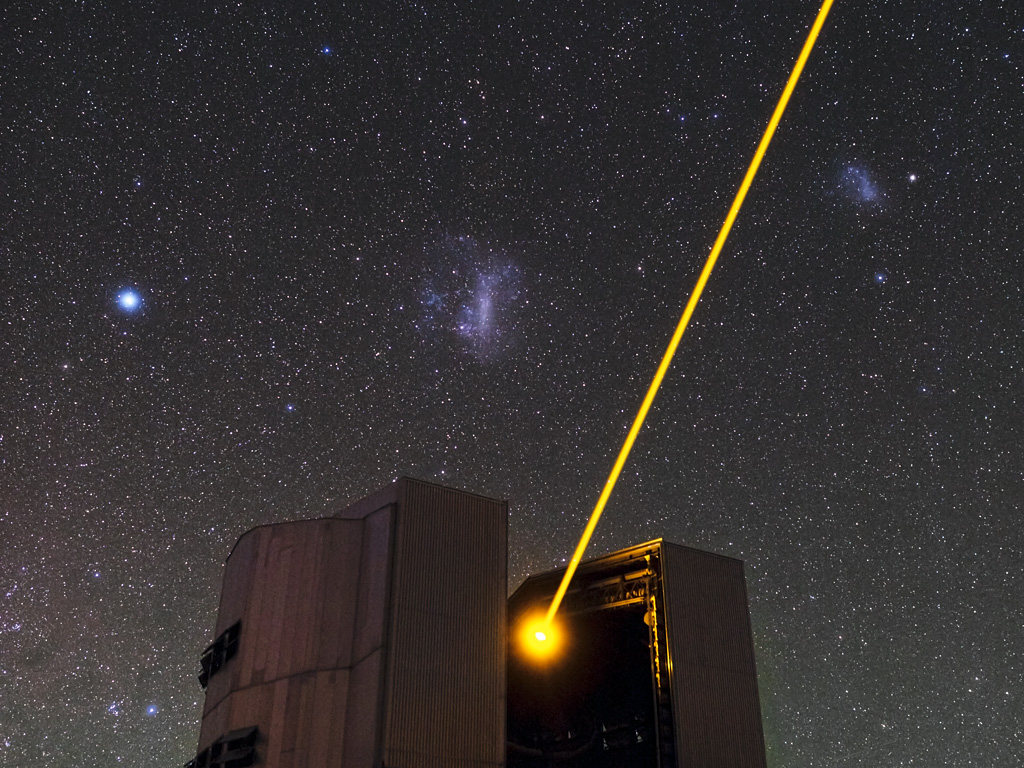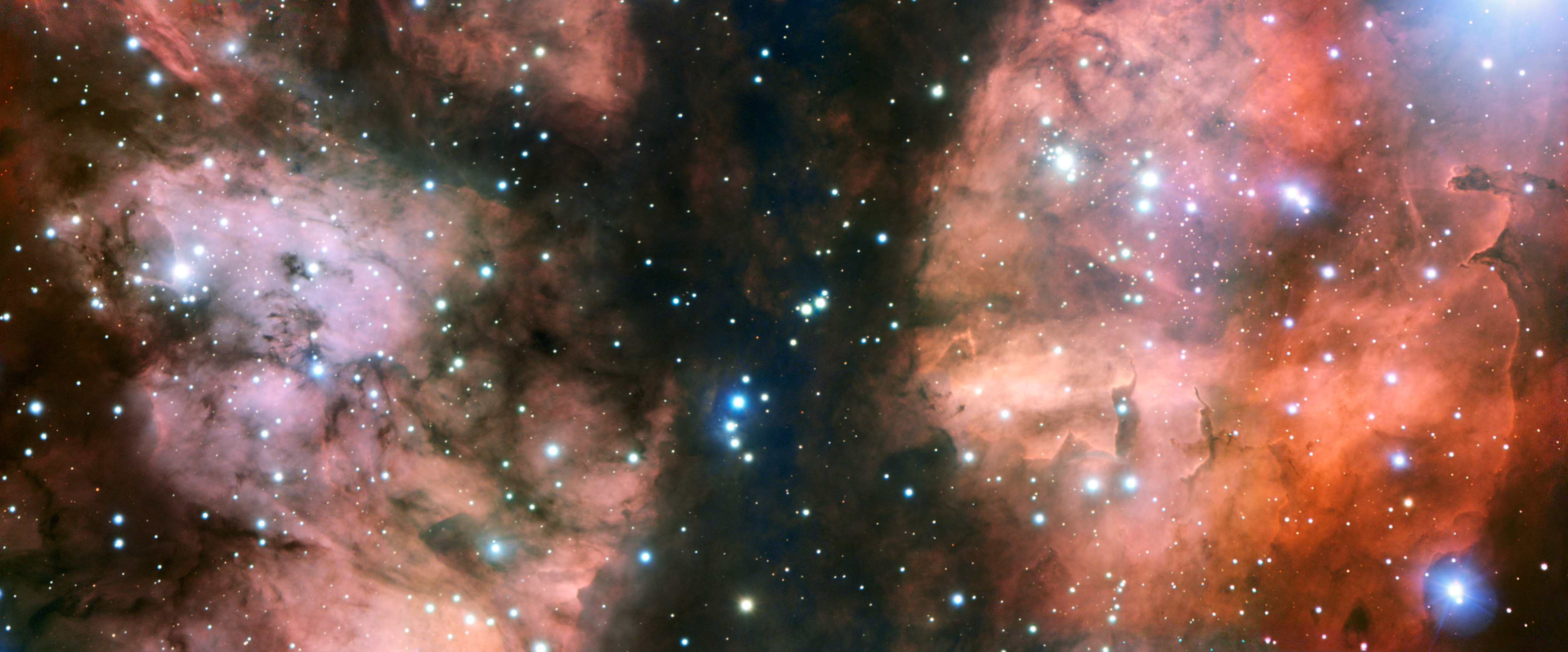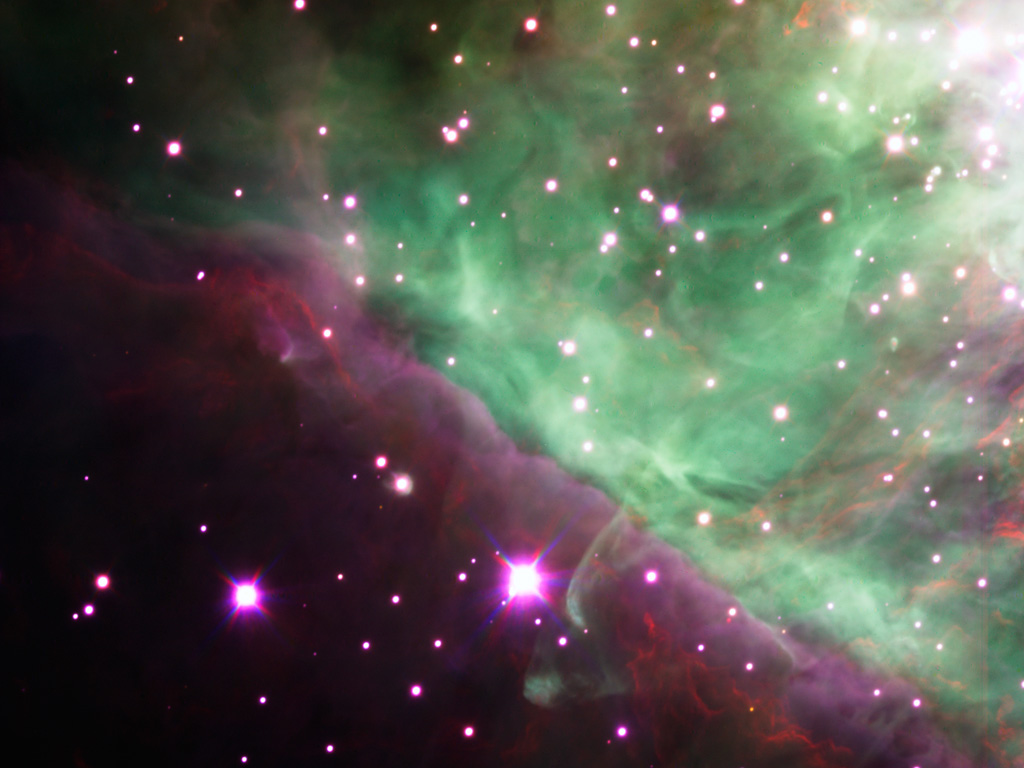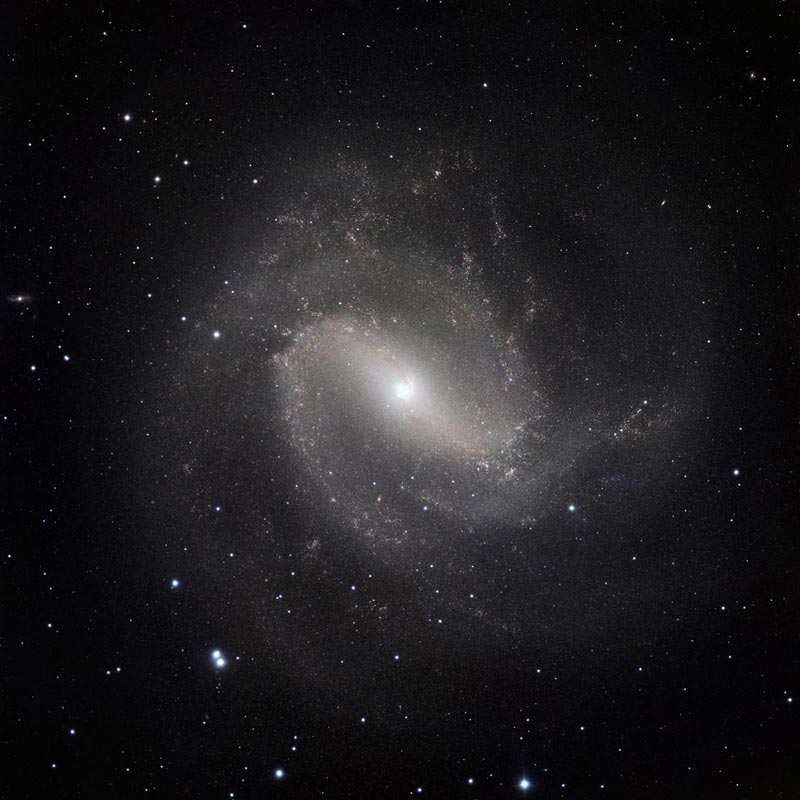Amazing Space Views of ESO's Very Large Telescope (Photos)
Omega Nebula's Bright Pink Heart
This image of the Omega Nebula (Messier 17), captured by the European Southern Observatory's Very Large Telescope, is one of the sharpest of this object ever taken from the ground. It shows the dusty, rosy central parts of the famous star-forming region in fine detail.
The VLT in Action
The ESO Very Large Telescope (VLT) during observations. In this picture, taken from the VLT platform looking north-northwest at twilight, the four 8.2-metre Unit Telescopes (UTs) are visible.
Carina Nebula Infrared Image from ESO's Very Large Telescope
This panorama of the Carina Nebula, a region of massive star formation in the southern skies, was taken in infrared light using the HAWK-I camera on the European Southern Observatory's Very Large Telescope in Chile and released Feb. 8, 2012. Many previously hidden features, scattered across a spectacular celestial landscape of gas, dust and young stars, have emerged.
Milky Way in 360-Degree Panorama
This amazing image seems to show the Milky Way streaming down not once, but twice, at ESO's Very Large Telescope on Chile's Cerro Paranal mountain. Actually, the photo shows a 360-degree panorama of the sky, so the two streams of stars are two halves of the band of the Milky Way arcing across the sky.
Yepun’s Laser and the Magellanic Clouds
This spectacular image shows Yepun, the fourth 8.2-metre Unit Telescope of ESO’s Very Large Telescope (VLT) facility, launching a powerful yellow laser beam into the sky.
War and Peace Nebula Captured by ESO's Very Large Telescope
The European Southern Observatory's Very Large Telescope has taken the most detailed image so far of a spectacular part of the stellar nursery called NGC 6357. The view shows many hot young stars, glowing clouds of gas and weird dust formations sculpted by ultraviolet radiation and stellar winds.
VLT Looks into the Eyes of the Virgin
This striking image, taken with the FORS2 instrument on the Very Large Telescope, shows a beautiful yet peculiar pair of galaxies, NGC 4438 and NGC 4435, nicknamed The Eyes. The larger of these, at the top of the picture, NGC 4438, is thought to have once been a spiral galaxy that was strongly deformed by collisions in the relatively recent past. The two galaxies belong to the Virgo Cluster and are about 50 million light-years away.
Breaking space news, the latest updates on rocket launches, skywatching events and more!
NGC 6729 - Baby Stars Spit Up High-Speed Jets in Photo
This very detailed false-colour image from ESO’s Very Large Telescope shows the dramatic effects of very young stars on the dust and gas from which they were born in the star-forming region NGC 6729.
Orion Nebula Spied by Hawk I 1024
The central region of the Orion Nebula (M42, NGC 1976) as seen in the near-infrared by the High Acuity Wide field K-band Imager (HAWK-I) instrument at ESO's Very Large Telescope at Paranal.
Hot Stars Found Hidden in Galaxy's Dusty Embrace
This infrared image of the nearby galaxy Messier 83 was taken by ESO’s Very Large Telescope (VLT) at the Paranal Observatory in Chile.











